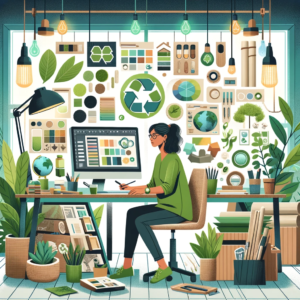In the Context of sustainability, What role do Designers Play?

As an interior designer, navigating the sustainability debate requires an integrated, multifaceted approach, acknowledging our role as designers within a more extensive system and, at the same time, striving for positive change that can be accomplished. In the face of global environmental concerns, eco-friendly practices are more than just a professional obligation.
It is essential to educate oneself and others to make progress. Staying up-to-date on sustainable technologies and practices can be achieved by participating in workshops, webinars, and conferences. The valuable knowledge that we have can shared with our colleagues and clients. By continuing to learn, we create a community where sustainable design is not just a preference but a norm. It goes beyond our practices when we advocate for change. Our collective voices can be crucial in promoting and influencing policies that encourage sustainable design on all levels. From local zoning laws to international trade agreements, every policy can shape our built environment’s sustainability.
It is possible to develop innovative solutions that balance aesthetic appeal with environmental protection when collaborating with environmental scientists, engineers, and manufacturers. We can create beautiful and environmentally friendly designs by engaging in cross-disciplinary partnerships. To achieve our sustainability commitment, we select and use materials sustainably. Materials should be researched and utilized to minimize their environmental impact throughout their lifecycle. As a result, we can create spaces that are not only temporary fixtures but also adaptable environments designed to maximize reuse and durability.
As a result of developing assessment methods, we have been able to quantify and improve the sustainability of our projects. It is through this accountability that we inform our practice and demonstrate to our clients and the community at large the tangible benefits of sustainable design.
Furthermore, our most daunting yet vital responsibility is to help consumers shift their mindset from consumption to appreciation to combat consumerism. Spaces designed for longevity must promote evolving areas rather than succumbing to trends. Developing a culture of sustainability and durability over the short-lived and wasteful is integral to cultivating a culture of durability and sustainability.
Finally, interior designers can make a substantial impact on the sustainability of our environment. Sustainable practices, business models, and the collective consciousness of our clients and communities are outlined above as a roadmap for embedding sustainability into our work. By embracing these principles, we contribute to the industry’s evolution and take a significant step towards a more sustainable future.
For the image:
The image is an AI image was created by me in Microsoft Bing which is illustrating the role of designers in sustainability.